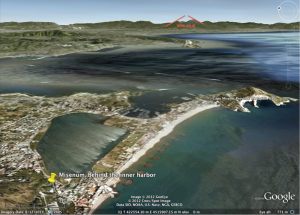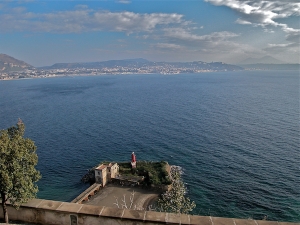
Lightning from the Eyjafjallajökull volcano in October, 2010, by Sigurdur Hrafn Stefnisson, from National Geographic
6.16.13-16: An Anxious Night
This post belongs to a serialized translation and commentary of Pliny the Younger’s letters (6.16 and 6.20) to the historian Tacitus about the eruption of Mount Vesuvius in AD 79. This is the fifth installment for letter 6.16.
The Elder Pliny has now arrived at the villa of his friend Pomponianus at Stabiae in the southeast corner of the Bay of Naples. Beset by ash, pumice, and tremors, the gathered guests and household staff are not yet in any immediate physical danger. But they can see the fiery devastation happening just a few miles away.
13 Interim e Vesuvio monte pluribus locis latissimae flammae altaque incendia relucebant, quorum fulgor et claritas tenebris noctis excitabatur. Ille agrestium trepidatione ignes relictos desertasque villas per solitudinem ardere in remedium formidinis dictitabat. Tum se quieti dedit et quievit verissimo quidem somno; nam meatus animae, qui illi propter amplitudinem corporis gravior et sonantior erat, ab iis qui limini obversabantur audiebatur.






